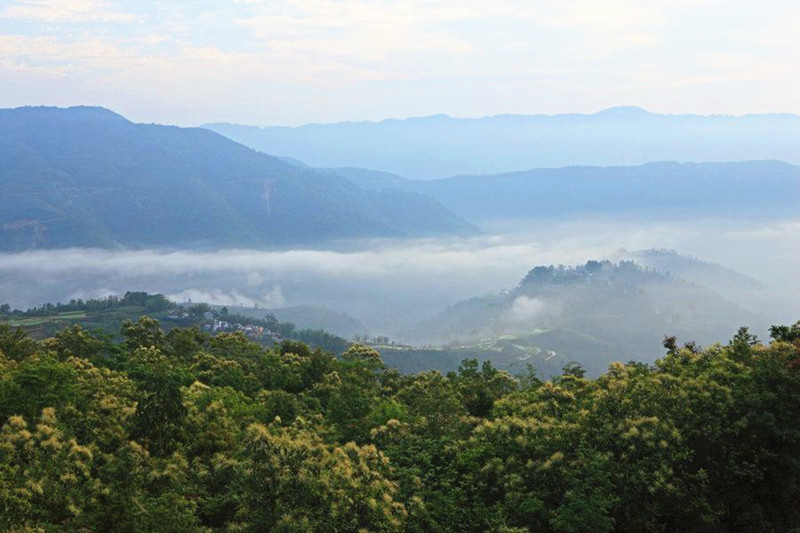
Notice: Trying to get property 'name' of non-object in /www/wwwroot/yunnanexploration.com/wp-content/themes/chinatours/category.php on line 125
Green Tea
Dianqing is a traditional sun-dried green tea from Yunnan, made from fresh leaves of local large-leaf tea trees. The process involves low-temperature pan-firing (below 180°C), rolling, and then sun-drying. It is a raw material for loose-leaf Pu’er tea that has not been pressed. The finished tea leaves are thick, dark green in color, and the brewed tea has a bright yellow-green liquor. It is durable for multiple infusions and has a unique “sunshine flavor.” Historically, it was divided into categories such as Spring Tips and Grain Flowers according to the harvest season. In modern times, it is divided into several grades like Spring Buds and Spring Shoots. Dianqing can be consumed as an independent tea or used as a key ingredient in pressed Pu’er tea.
The core difference between Dianqing and Dian Green tea lies in the pan-firing temperature and sun-drying process, which helps retain the active substances in the tea leaves, allowing for further transformation during aging.
Dianqing has been traded along the Tea Horse Road since the Tang Dynasty and solidified its position as a key raw material for Pu’er tea during the Qing Dynasty. The Western Yunnan Tea Region (including Lincang, Baoshan, and others) is the main production area, accounting for 60% of the province’s total tea production. After the 1970s, some areas switched to oven-drying, but the traditional sun-drying method continues in minority areas, such as the pot-roasting tea custom.
Dianqing achieves slow natural transformation by retaining moderate moisture and enzyme activity. It can be consumed directly or aged for long-term storage. The technique laid the foundation for the processing of modern Pu’er Ripe Tea.

 7 Days GolfingTour
7 Days GolfingTour
 8 Days Group Tour
8 Days Group Tour
 8 Days Yunnan Tour
8 Days Yunnan Tour
 7 Days Shangri La Hiking
7 Days Shangri La Hiking
 11 Days Yunnan Tour
11 Days Yunnan Tour
 6 Days Yuanyang Terraces
6 Days Yuanyang Terraces
 11 Days Yunnan Tour
11 Days Yunnan Tour
 8 Days South Yunnan
8 Days South Yunnan
 7 Days Tea Tour
7 Days Tea Tour
 8 Days Muslim Tour
8 Days Muslim Tour
 12 Days Self-Driving
12 Days Self-Driving
 4 Days Haba Climbing
4 Days Haba Climbing
 Tiger Leaping Gorge
Tiger Leaping Gorge
 Stone Forest
Stone Forest
 Yunnan-Tibet
Yunnan-Tibet
 Hani Rice Terraces
Hani Rice Terraces
 Kunming
Kunming
 Lijiang
Lijiang
 Shangri-la
Shangri-la
 Dali
Dali
 XishuangBanna
XishuangBanna
 Honghe
Honghe
 Kunming
Kunming
 Lijiang
Lijiang
 Shangri-la
Shangri-la
 Yuanyang Rice Terraces
Yuanyang Rice Terraces
 Nujiang
Nujiang
 XishuangBanna
XishuangBanna
 Spring City Golf
Spring City Golf
 Snow Mountain Golf
Snow Mountain Golf
 Stone Mountain Golf
Stone Mountain Golf







